|
Robot I |
Manufactured or assembled in Germany from 1934 to (Before) 1939.
Index of rarity in France: Rare (among non-specialized garage sales)
Inventory number: 30080
See the complete technical specifications
Chronology of cameras Robot
The Robot cameras were invented by the watchmaker Heinz Killfit (1898-1980), who later designed the Killfit macro lenses and the Mecaflex camera. Killfit tried to convince Kodak and Agfa to make the camera, but it was only Otto Berning & Co. (Schwelm, Germany) that believed in Killfit’s innovative design and started distributing the camera in 1935. The design was a competitor of Leitz, Zeiss Ikon and other makers that were innovating with small format cameras for cine film (35mm), mostly for format 24x36mm. The Robot used a frame size of 24x24mm allowing over 50 exposures per standard roll.
The Robot designation had been invented not long before by the Czech writer Karel Capek, and the Robot cameras were amongst the first devices to bear the designation. But automation was a limited concept at the time. Nevertheless, a number of interesting innovations were present, mostly a spring mechanism that advanced film and cocked the behind-the-lens rotary shutter, providing the driving force for up to 24 shots in a row. With practice, the photographer could make 4 photographs per second.
1934 and 1936 patents showing the evolution towards the final form of the Robot:
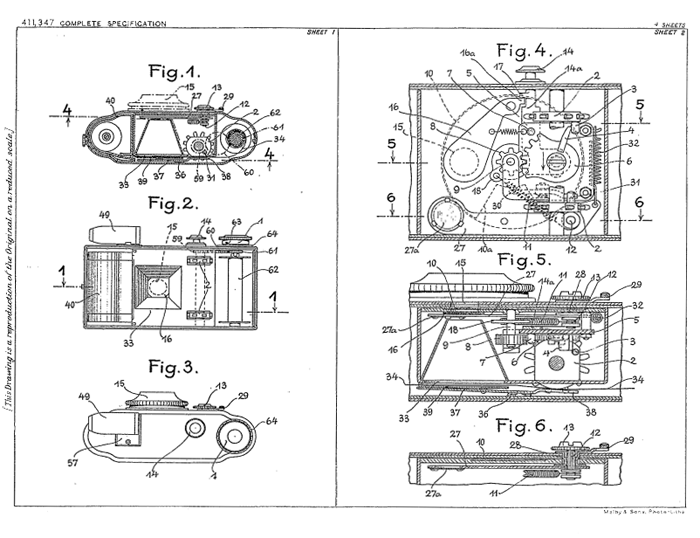
N° GB411347
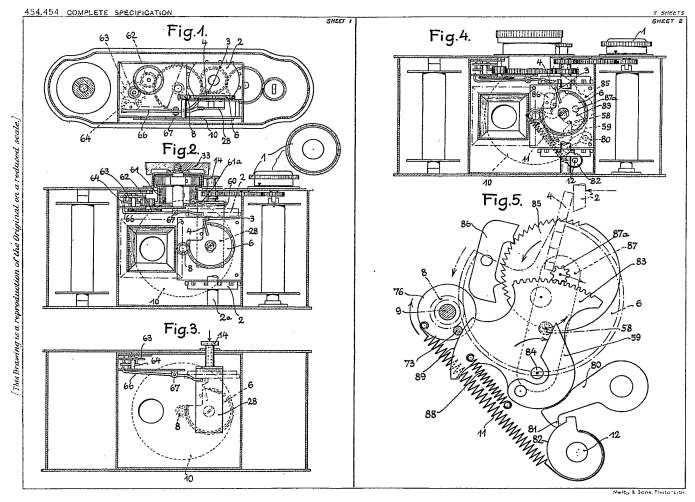
N° GB454454
The Robot I is a small but heavy camera, using proprietary cartridges. The lenses are interchangeable via a 26mm screw mount and include a 30mm Carl Zeiss Tessar with f/2.8 or f/3.5 aperture, an f/3.5 Meyer Primotar, and a Schneider 50mm f/5.5 Telexenar. The example pictured here has a CZJ Tessar 30/2.8.
The Robot I has other interesting features, such as an internal yellow filter that automatically compensates the shutter speed for the loss of light. The viewfinder rotates and can be used from the side, and in this case, has a blue filter to simulate B&W film. The camera is designed to use hyperfocal focusing, and for that, there is a clear colour scheme on the distance and depth of field scales. All these characteristics promote rapid shooting. This specimen is a late version, indicated by the additional lower disc on the advance knob, to prevent accidental exposures.
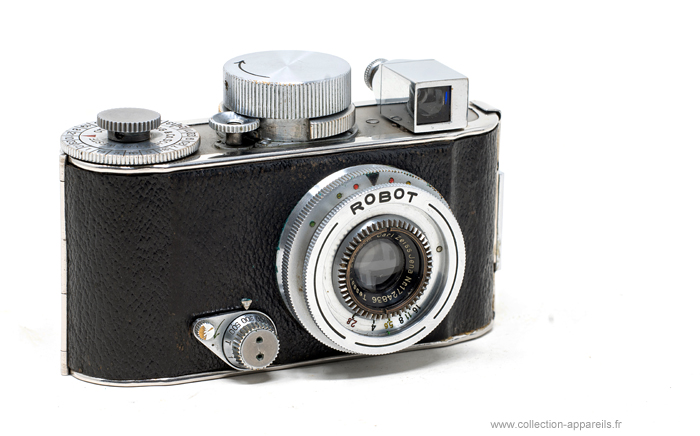
Late version (circa 1938) of the Robot I
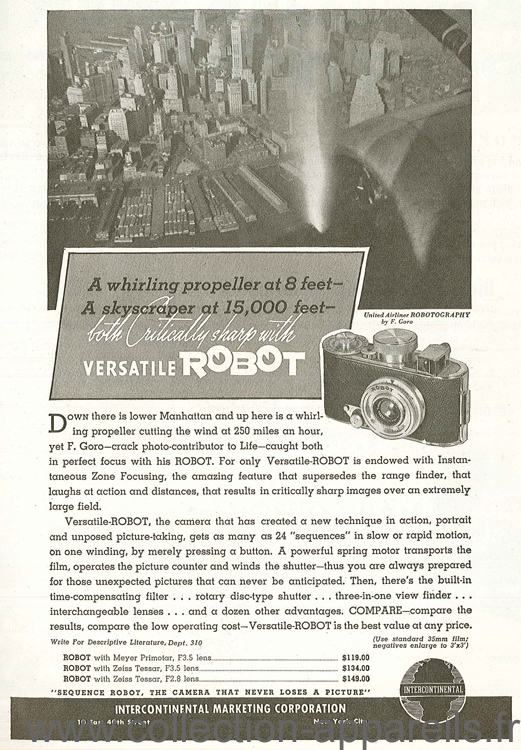
Interesting links or bibliography :
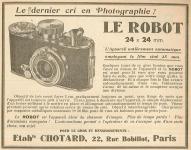 Photo Cine Revue de 1937 | 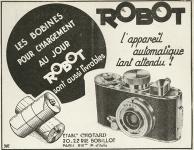 Photo-Revue de 1935 |
Add a link or element of bibliography, a picture taken with this camera, a picture of box or an ads about this camera
Your photos taken with the same camera:
Cameras from Ebay France (Robot) (Uploaded each 3 hours)








